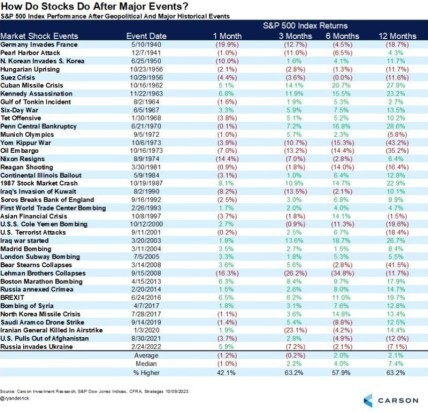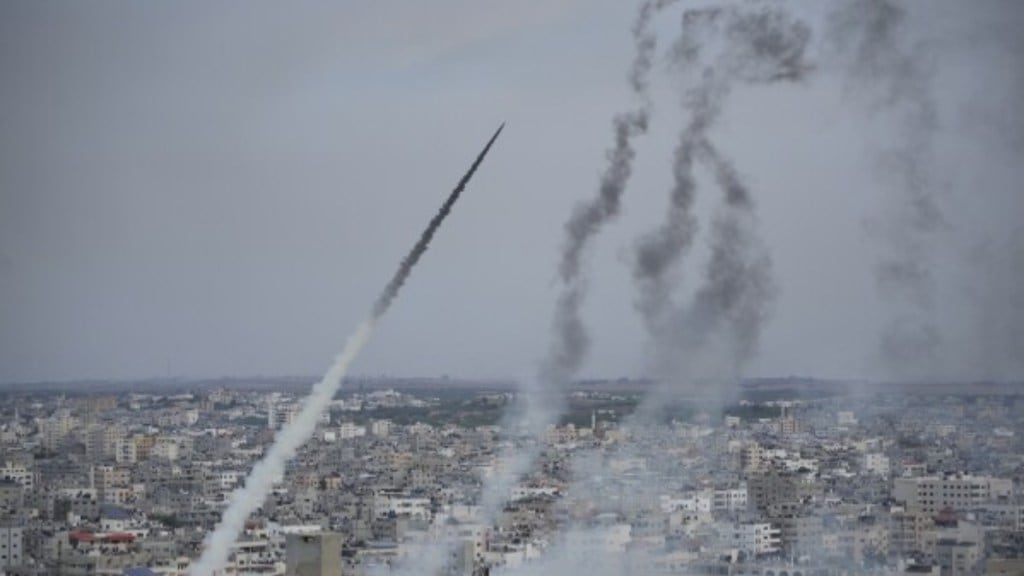– By Dr Manoranjan Sharma
The surprise Israel-Hamas war on top of the Russia- Ukraine war, uncertainty in Taiwan and the post COVID-19 pandemic recovery has heightened geo-political tensions. The World Economic Forum’s Global Risks Report 2023 characterised the present situation as ‘polycrisis’- “a cluster of related global risks with compounding effects, such that the overall impact exceeds the sum of each part”.
This war, which marked the single bloodiest day in Israeli history and in the annals of the Jewish people since the Holocaust, has wide-ranging ramifications and repercussions across geographies, economies and sectors with volatility in bond and equity markets albeit temporarily. Bond yields will harden, cost of credit may go up for companies, crude price will rise if it spills over to the Middle East. A sustained reduction in oil supply and consequently surging crude oil prices would raise domestic inflation and interest rates could remain persistently high for long. The disconcerting mix of war risk, spurt in US bond yield to record highs and volatile crude support the safe-haven dollar. Technically, the greenback is still in an uptrend and this correction could be the normal retracement. Gold may become a safe haven.
Swap traders are divided on the chances of another Federal Reserve rate hike by December, pricing in roughly 50% likelihood after the nonfarm payrolls report showed employers quickened the pace of hiring.
The Federal Reserve warned of escalating geopolitical risks to the global financial system with the Middle East conflict and war in Ukraine threatening ‘spillovers’ to markets amid heightened risks of higher inflation and slower growth. The Fed said “the global financial system could be affected by a pullback from risk-taking, declines in asset prices, and losses for exposed businesses and investors, including those in the US”.
The IMF’s report demonstrates that a 10 point basis hike by the US Fed will reduce commodity prices by 0.5 per cent to 2.5 per cent with a lag of 18 to 24 days and there are larger effects for highly storable and industrial goods. Accordingly, stance between central banks could diverge depending on their peculiar circumstances and distinctive conditions.
Global Spillovers
With seething anti-Semitism, rising Islamophobia and surging political tempers, there could be a further flashpoint in the Middle East with the Israel-Hamas war escalating to Iran. The US brought two of its warships and China also parked its warship in the troubled waters. Iran is contextually significant because of the crude oil output of almost 3 million barrels per day (mb/d) i.e., about 3 per cent of the global production but more importantly, 20 per cent of the total crude oil production passes through the Persian Gulf.
Indian Scenario
This war would have multiple macroeconomic impacts on India and also have several implications for the financial and banking sector. Bond yields will go down — as interest rates would rise further, oil prices will go further up. This would impact the Indian capital market, the banking sector and the triple deficits- trade deficit, current account deficit and also fiscal deficit.
FIIs are continuously selling due to higher bond yields and high crude oil prices could add more issues. India and the rest of the world are now tackling the menace of inflation. The rapidly worsening war makes the transition growth pathway uneasy and the ascent to growth difficult and uneven. This leads to rising fears that central banks would launch a series of rate hikes to temper inflation and the RBI will have to carefully straddle the growth-inflation trade-off. Rate-cutting by the RBI would be delayed.
Sectoral Impact
While surging oil prices have a cascading macro-economic impact across sectors and could trigger a risk-off, oil-based sectors like automobiles, transportation, aviation, paints, tyres, cement and chemicals could take the greatest hit. So far, the market doesn’t seem to be unduly disrupted by the war-related risk because the supply-demand oil dynamics continue to be unfettered.
Indian stocks with an Israeli connection include Adani Ports, Sun Pharmaceutical, Dr. Reddy’s and Lupin, NMDC, Kalyan Jewellers and Titan. Further, oil marketing companies could be adversely impacted. The war could slacken India’s plan of building an India-Middle East-Europe Economic Corridor as reflected in the falling prices of railway stocks like IRCON, Jupiter Wagons, and RVNL. The bearish Indian stock market is also attributable to the gradual downsizing of the Canadian Pension Fund, redemption pressure on FII’s for profit taking, high P/E ratio and overheated segments of the market, the US Fed and unassertive role of the LIC. Contrary to popular perception, extensive pessimism is unwarranted.

Volatile Oil
Exacerbating two-pronged oil pressure stemmed from first Russia and now the Middle East. For natural gas, Europe slashed its Russian dependence by switching to the Middle East. Oil prices are trading in a narrow $87-$89 band. But oil prices could breach the psychological barrier of $ 100 a barrel.
Torn Asunder: Where Now?
A no-holds barred war is now on with Israel launching its campaign of retribution to irrevocably change the status quo in Gaza, ending Hamas’ incursion into Israel, destroying the group’s capabilities, and rescuing over 200 Israeli hostages in Gaza. The US has also brought its warship close to the hotspot as indeed has China. In this evolving situation, if the war is localised, things could be reasonably contained. But if Iran gets affected and there is a major flashpoint with China, then things could degenerate into a free fall and all bets would be off.
Even if this worst-case scenario does not materialise, there are distinct fears of a multi-front war in Gaza (“the graveyard of a population trapped between war, siege and deprivation”), the West Bank and Lebanon since Iran is supporting Hamas, Hizbullah and Palestinian Islamic Jihad (PIJ). Despite such manifest dangers, this conflagration is unlikely to degenerate in a wider regional war. Retaliation by the US to attacks on troops in Iraq and Syria could lead to a region-wide tempest-a tempest from which retreat would be difficult.
While Israel would eventually succeed in its military and territorial objectives, all parties to the war would be devastated. The post-war situation would also be characterized by continued insecurity and instability in daily toil of survival and the business environment in Yemen, Syria, Iraq, and Lebanon would be scarred for long.
Resolution plans have been still-born because of seemingly irreconcilable differences among the parties to the dispute. The U.N. Security Council has been unable to devise a consensus on halting the carnage in the Middle East, with the United States and Russia vetoing each other’s resolutions. While Russia insisted on a complete cease-fire, the USA made a case for “all measures, specifically to include humanitarian pauses”. Clearly, in view of the intractable differences on the ostensibly endless Israeli-Palestinian conflict, there are no easy answers in the embattled, besieged territory.
Concerns about Iran, broader geopolitical developments, shared economic interests and the perceived need to be on the right side of the US because of its financial muscle and clout will facilitate on-going co-operation between Israel and some Arab nations. But given the trust deficit on both sides, the thaw in relations between Israel and Arab states will take some time and some doing.
(Dr Manoranjan Sharma is the Chief Economist at Infomerics Ratings.)
(Disclaimer: Views expressed are personal and do not reflect the official position or policy of Financial Express Online. Reproducing this content without permission is prohibited.)
